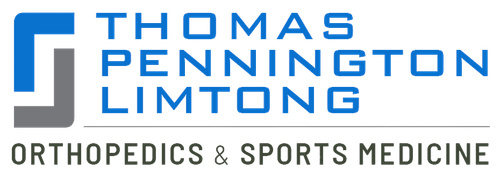 Radial tunnel syndrome is also known as a radial nerve entrapment. This condition refers to radial nerve compression or restriction in the tunnel that it passes through.
Radial tunnel syndrome is also known as a radial nerve entrapment. This condition refers to radial nerve compression or restriction in the tunnel that it passes through.
Rotation of the wrist/lower arm rather than repetitive movement such as in tennis elbow is usually the reason for this elbow injury. However, the symptoms of radial tunnel syndrome and tennis elbow can sometimes be quite similar.
Thomas & Bigler Knee & Shoulder Institute, led by board certified orthopedic surgeons Dr. Steven C. Thomas and Dr. Gregory T. Bigler, provides orthopedic treatments to patients in Las Vegas, Nevada, and surrounding locations in The Silver State.
Radial Tunnel Symptoms
Radial nerve entrapment symptoms are similar to those associated with tennis elbow. Therefore, it may be challenging to identify which of these two conditions is leading to the pain in the elbow.
Other symptoms of this condition are tingling or pins and needles in the hand and outer forearm.
The patient may experience tenderness in the upper forearm muscles with the maximum tenderness occurring around four to six cm down from the lateral epicondyle. In case of tennis elbow, the point of maximum tenderness is right underneath the bone. This condition may also cause wrist pain which may radiate towards the upper arm.
Radial nerve entrapment can be diagnosed with a specific test which reproduces pain on turning the palm of the hand up and extending the middle finger against resistance or resisted supination.
The radial nerve bifurcates into two branches at the elbow, namely the posterior interosseous nerve (PI nerve) and superficial radial nerve. Radial tunnel syndrome occurs when the PI nerve in the forearm gets compressed. This compression of the PI nerve can occur at various locations in the upper forearm and elbow.
This condition frequently occurs in those who turn the hand over or pronate and supinate the arm in a repetitive manner. On the other hand, tennis elbow typically manifests due to repetitive wrist extension or bending of the wrist backwards.
Treatment
Radial nerve entrapment treatment comprises a combination of rest and discontinuing any repetitive wrist motion. The application of ice therapy to the forearm and elbow may also offer relief from the symptoms.
Ice and Compression
The patient should apply the principles of P.R.I.C.E. (Protection, Rest, Ice, Compression, and Elevation) in the initial 72 hours following the injury. The application of a cold compression wrap should not be done for over 15 minutes as the injured tissues are located close to the skin and do not require a longer application.
Protection
If the patient wears specialist elbow support, it can reduce the pressure on the tendon expediting the healing process. This involves the application of compression around the injured site creating pressure on the compromised tendon. Change in the way forces are transferred through the tendon allows the injured tissues to rest.
Rest
The most crucial part of the treatment and usually the most challenging is allowing the injured tendons to rest. In case the patient continues the offending activities with the painful elbow, it will not recover fast and become chronic and hard to treat.
The doctor may prescribe anti-inflammatory meds, and a professional therapist may perform soft tissue massage to free the supinator muscle which typically causes the entrapment.
The patient may also undergo neural stretches within the physical therapy treatment. If the condition is persistent or severe, the patient may require surgical intervention to decompress the nerve which usually resolves the condition.
But if the patient requires surgery, they may take around eight weeks to recover. Kind board certified orthopedic surgeons Dr. Thomas and Dr. Bigler receive patients from Las Vegas, Nevada, and other towns and cities in this region of the southwest.
If you would like to schedule an appointment or learn more about the Knee and Shoulder Institute procedures & treatments performed by Las Vegas, Nevada board-certified surgeons Steven C. Thomas, MD and Gregory T. Bigler, MD. Contact the office today click here.
